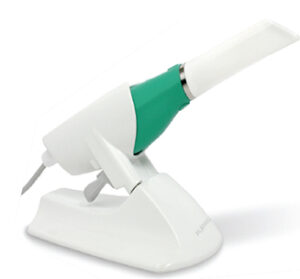FAQ: Planmeca Emerald intraoral scanner and PlanMill 40 S
Chairside Digital Solutions Boost Patient Satisfaction and Office Productivity.
CHAIRSIDE DIGITAL SOLUTIONS BOOST PATIENT SATISFACTION AND OFFICE PRODUCTIVITY
What are the benefits of embracing chairside digital technology?
When practices implement intraoral scanning and chairside computer aided design and computer aided manufacturing (CAD/CAM) technology — such as Planmeca’s PlanMill 40 S milling unit and the new Planmeca Emerald scanner — they not only boost office productivity and efficiency, they also improve the patient experience.
Conventional impressions and crown/bridge techniques often create patient anxiety due to the anticipation of gag-inducing impression materials and trays. Introducing the digital component to these procedures can reduce or eliminate these fears. Digital scanning is more comfortable for patients due to the lack of messy impression materials. In addition, the tips of most intraoral scanners are smaller than impression trays and increase patient comfort — and this is especially true of the compact and ultra lightweight Planmeca Emerald scanner.
Clinically, are restorations produced by digital scanning and chairside CAD/CAM as good as those made using traditional methods?![]()
In many cases, digitally produced restorations are equal to or better than restorations made using traditional processes. With specialized software, such as Planmeca’s FIT Open CAD/CAM system, clinicians can customize the restoration to perfectly fit the interproximal space. Having the ability to craft a restoration chairside to ensure the contacts are an ideal fit significantly reduces seating time and creates a more efficient process — not to mention a superior restoration. In comparison to chairside CAD/CAM, if a lab restoration doesn’t fit, in many cases it must be returned to be adjusted.
Does offering CAD/CAM dentistry really matter to patients?
Many patients — or potential patients — are not aware of the choices available when it comes to dental technology. When patients discover a restoration option that does not require a second appointment, additional time off work, the need to find someone to watch the kids, or gag-inducing impressions, they are relieved because there are fewer inconveniences. Digital dentistry demonstrates to patients that the office is innovative and offers the most advanced care possible. The key is making patients aware of the digital option through marketing and word of mouth.
Isn’t it expensive to invest in digital impression and CAD/CAM systems?
While the initial investment can be a barrier for some offices, in many cases, the business generated by this technology pays for the monthly bill and provides additional revenue through cost savings and the ability to see more patients. When dentists compare their monthly lab expenses before adding an in-house mill to the lab expenses after a mill is installed, they realize they are savings hundreds or, in some cases, thousands of dollars each month. The return on investment occurs through a reduction in lab expenses and increases in productivity. Chairside digital dentistry systems usually pay for themselves within one to two years. For more information on how practices can implement intraoral scanning and in-office design and milling, call 972-792-1401 or visit planmecausa.com/na/CADCAM.

planmecausa.com/na/CADCAM
From Decisions in Dentistry. October 2017;3(10):57.



